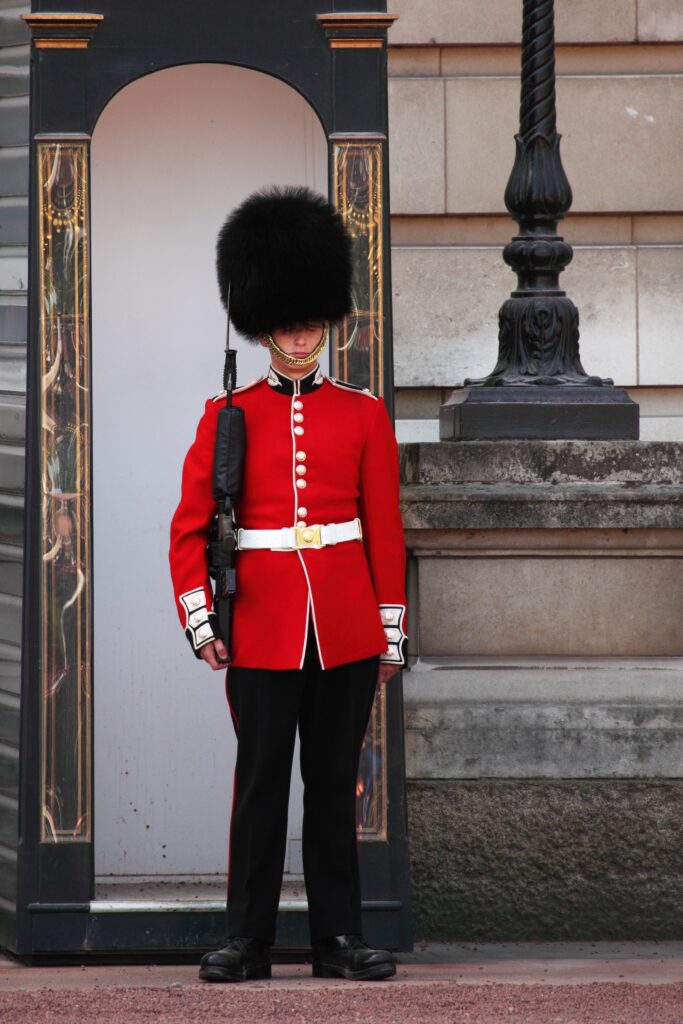The King’s Guards are a group of five regiments in the British Army. They are responsible for guarding the Royal Palaces. In London, you can see them outside Buckingham Palace and St James’s Palace. While they wear ceremonial uniforms when on duty, these are real soldiers.
The King’s Guards are the ones you can see performing the Changing of the Guard. They are known for their distinctive uniforms which include scarlet tunics, bearskin caps and white gloves.
Each regiment of Foot Guards has a Regimental Band. You can see these highly acclaimed musicians leading the Guards at ceremonial events in London and Windsor.

Not Beefeaters
I overheard some tourists calling the guards at Buckingham Palace ‘Beefeaters’. The Beefeaters can be found at the Tower of London and are properly called Yeoman Wardens. Their uniform includes a ruffle collar and no bearskin cap.

Household Division
The Household Division forms a part of the British Army’s London District. It comprises five regiments of Foot Guards and two Household Cavalry regiments.
The Household Cavalry is the two most senior regiments of the British Army: The Life Guards and The Blues and Royals.
We are going to focus on the differences between the Foot Guard regiments (called Foot Guards because they walk and do not ride horses).
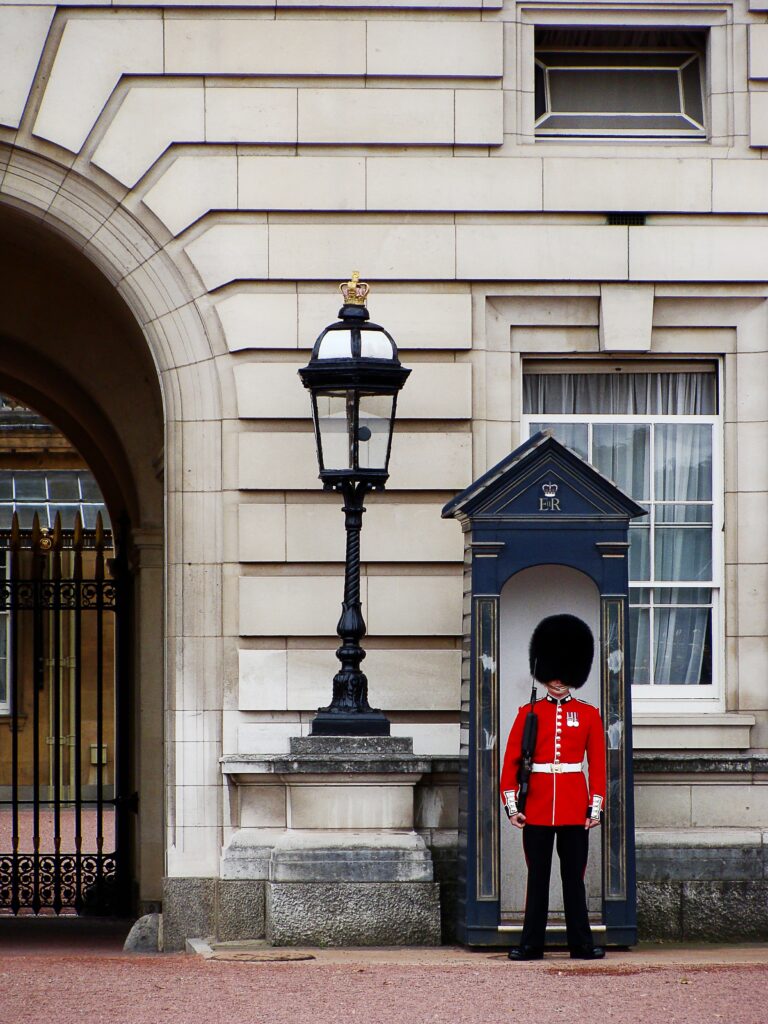
The Five Foot Guard Regiments
The five regiments of the King’s Guards are:
- Grenadier Guards
- Coldstream Guards
- Scots Guards
- Irish Guards
- Welsh Guards
The uniforms may look similar but there are some subtle points to help distinguish them.

How To Recognise The Different Regiments
The spacing of the buttons: The buttons on the tunic are spaced differently for each regiment. The Grenadier Guards have their buttons spaced evenly. The Coldstream Guards have their buttons spaced in pairs. The Scots Guards have their buttons spaced in threes. The Irish Guards have their buttons spaced in fours. And the Welsh Guards have their buttons spaced in fives.
The badge on the collar: The badge on the collar is also different for each regiment. The Grenadier Guards have a grenade on their collar. The Coldstream Guards have the Garter star on their collar. The Scots Guards have a thistle on their collar. The Irish Guards have a shamrock on their collar. And the Welsh Guards have a leek on their collar.
The badge on the shoulder: The badge on the shoulder is another point for recognition. The Grenadier Guards have a Royal Cipher on their shoulder. The Coldstream Guards have a rose. The Scots Guards have the thistle star. The Irish Guards have a St Patrick’s Star. And the Welsh Guards have a leek on their shoulder.
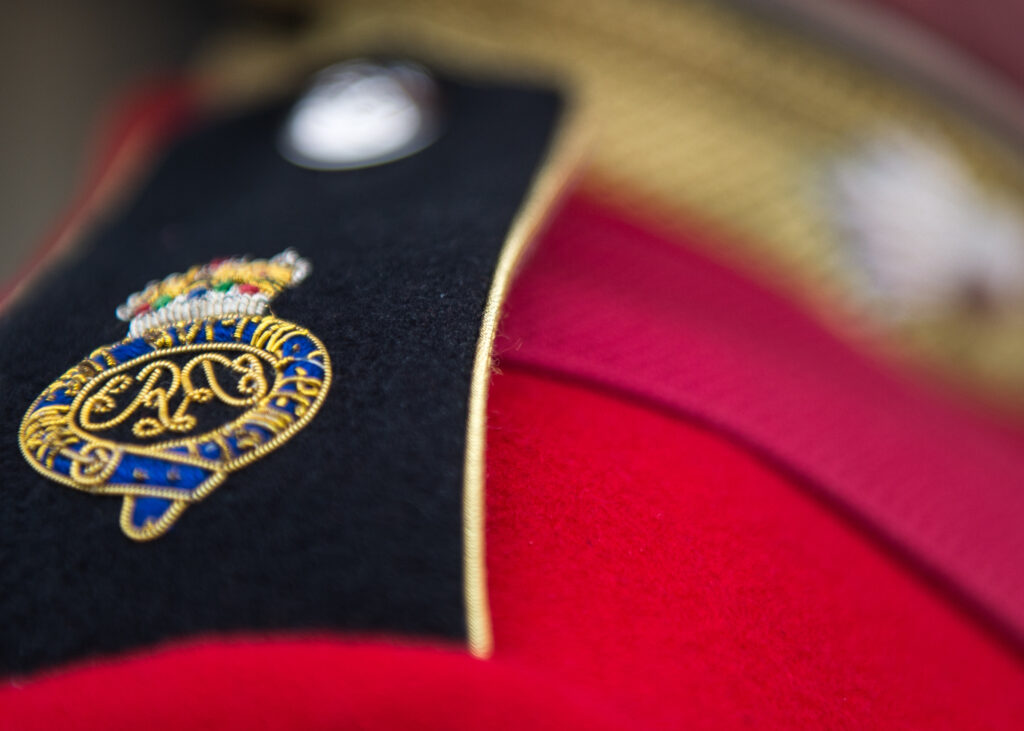
The colour of the plume: The plume on the bearskin cap is different for each regiment. The Grenadier Guards have a white plume. The Coldstream Guards have a red plume. The Irish Guards have a blue plume. The Welsh Guards have a white/green/white plume. And the Scots Guards have no plume.
The location of the plume: The plume on the bearskin cap is not on the same side for all regiments. The Coldstream Guards and Irish Guards wear their plumes on the right side of their caps. The Grenadier Guards and the Welsh Guards wear their plumes on the left side.
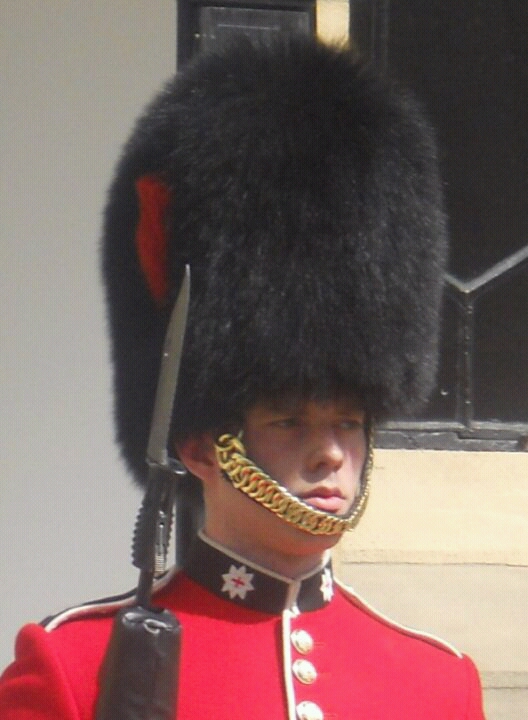
Here’s a handy table to make the information easier to compare.
| REGIMENT | BUTTONS | COLLAR BADGE | SHOULDER BADGE | BEARSKIN PLUME |
|---|---|---|---|---|
| Grenadier Guards | Single | Grenade | Royal Cipher | White on the left side |
| Coldstream Guards | Pairs | Garter star | Rose | Red on the right side |
| Scots Guards | Threes | Thistle | Thistle star | No plume |
| Irish Guards | Fours | Shamrock | St Patrick's Star | Blue on right side |
| Welsh Guards | Fives | Leek | Leek | White/green/white on the left side |
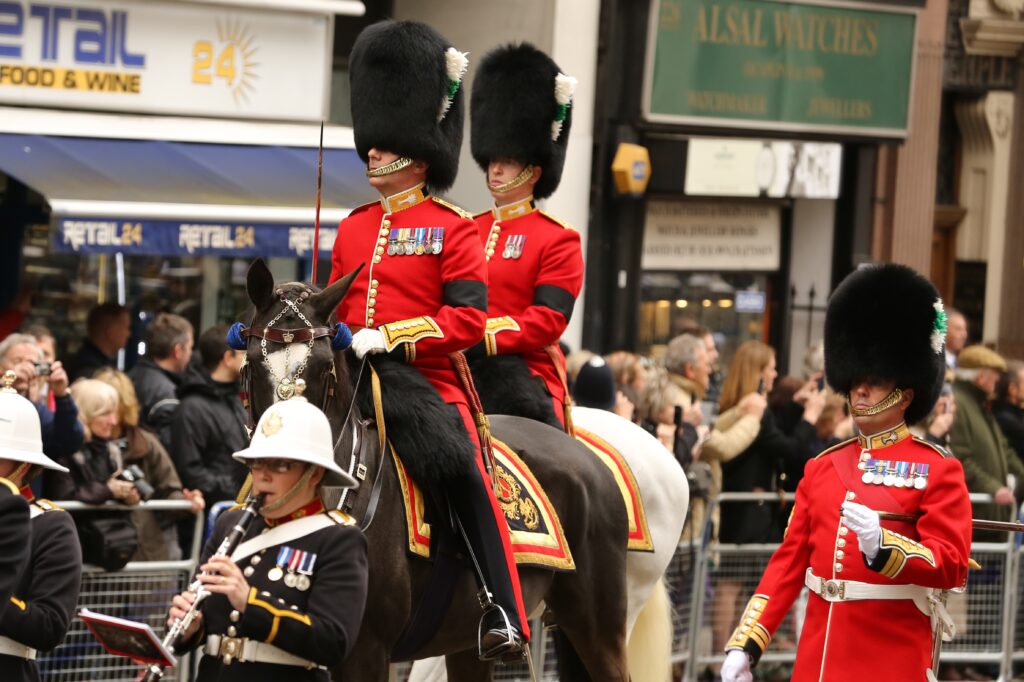
Additional Information
The King’s Guards were formed in 1660 to protect the Royal Family and the Palaces. This was after the Restoration of the Monarchy when Charles II became king.
The Guards Division was established by redesignation of the Brigade of Guards in 1968. The King’s Guards are highly decorated regiments and have served in many conflicts throughout history. His Majesty The King is Colonel in Chief of all the regiments in the Household Division.
